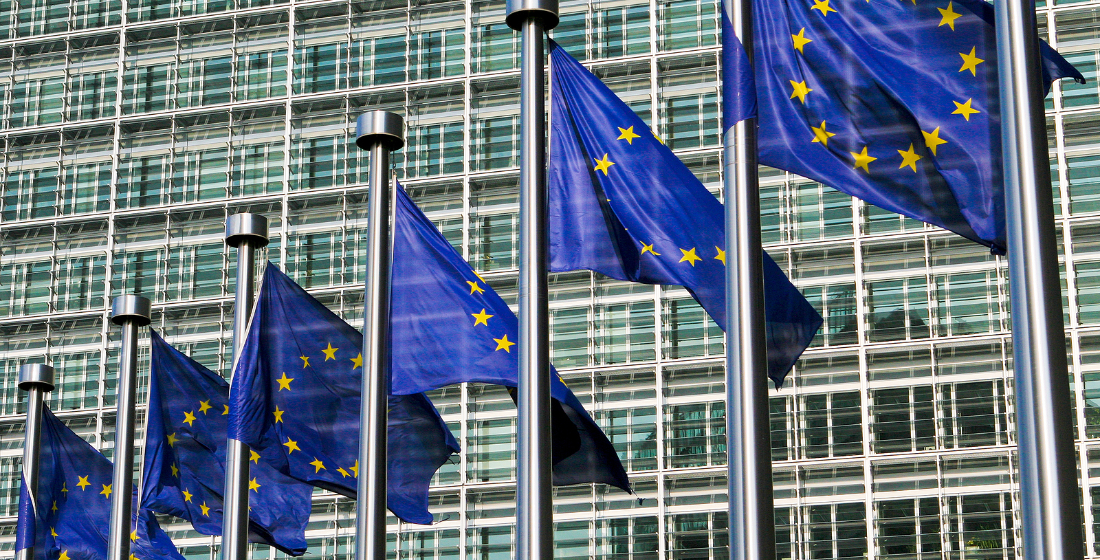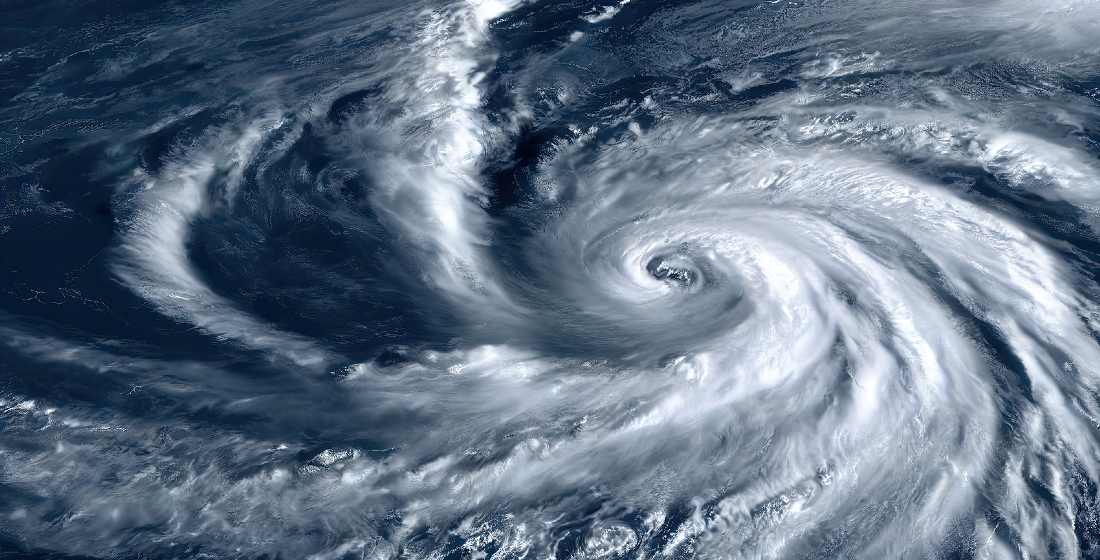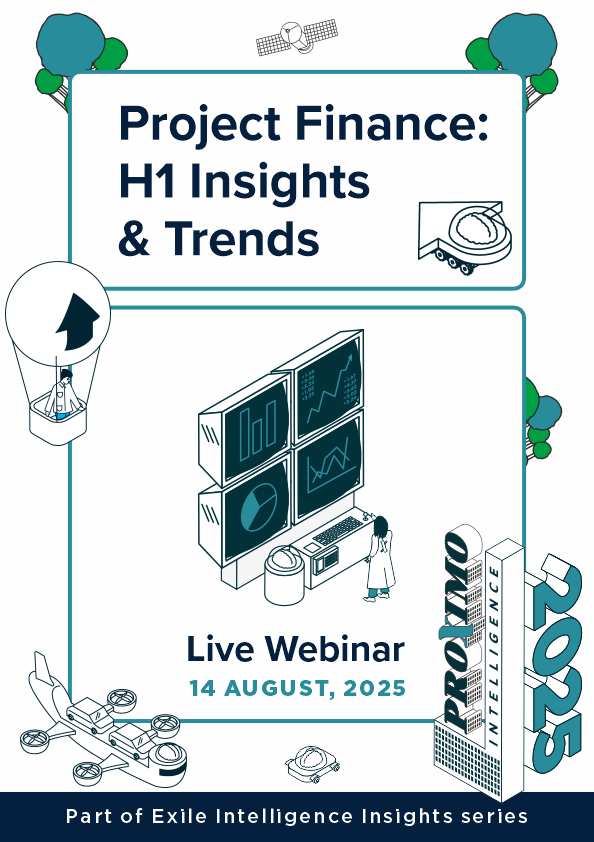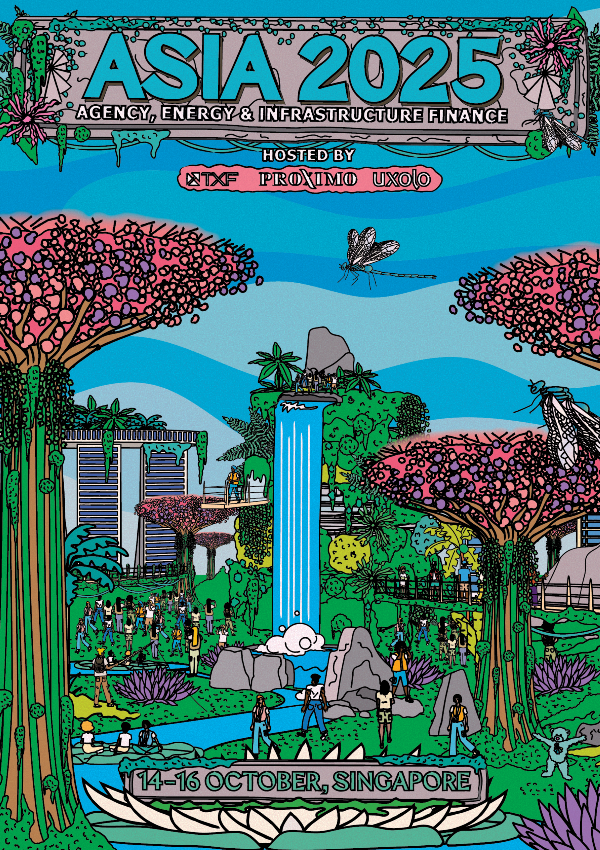The EU gears up for development finance framework
The EU is currently considering a financial framework for European multilateral and bilateral development banks – under the EFAD umbrella. But, as Paul Mudde, consultant at Sustainable Finance & Insurance outlines here, these discussions have so far ignored reports made to the G20 and unregulated official financial competition, particularly from China.

In October 2019, the EU-Wise Persons Group (WPG) presented an independent analysis on optimising the EU Financial Architecture for Development (EFAD). This report is mainly about the development finance activities of the European Bank for Reconstruction and Development (EBRD), the European Investment Bank (EIB), the EU Commission and - albeit to a lesser extent – those of individual EU member states through their bilateral development banks (BDBs) and their official development assistance (ODA) aid agencies.
Aid from the EU is currently very fragmented because the EBRD, the EIB, and various national development finance actors operate quite autonomously and pursue their own development policies. Jointly, however, the EU is the largest donor to developing countries. Recent OECD figures show that ODA provided by the EU has reached €66.8 billion ($80.7 billion) in 2020 on a grant equivalent basis, representing 0.50% of EU gross national income (GNI). This is significantly above the 0.26% average of non-EU countries that are members of the OECD Development Assistance Committee (DAC). In 2020 the EU was responsible for approximately 46% of the total ODA provided by all OECD DAC members to developing countries. It should be noted that these ODA figures do not include non-ODA development finance provided by various EU development banks.
In December 2019, following the advice of the EU WPG, the EU Council commissioned a further feasibility study into three possible options for the future of the European Financial Architecture for Development, namely: (1) Scenario A - a European development bank based on the EBRD, (2) Scenario B - a European development bank based on a subsidiary of the EIB for EU external activities and (3) Scenario C - improving the current architecture (status quo +). The status quo + option implies maintaining the current fragmented situation, combined with more “policy coordination” by the EU Commission and some general recommendations to promote mutual cooperation between various EU development finance Institutions.
On Thursday 29 April 2021 the EU ministers for development cooperation discussed these three options further in an EU council meeting. It appears that a majority of EU countries are likely to opt for option 3, but this is not yet certain. The status quo + option is also supported by the EBRD, the EIB and various EU BDBs.
The entire EFAD-discussion has so far been dominated by institutional issues and interests of various development financiers in the current EU development eco-system. In discussing the three options hardly any attention has been given to two key questions, namely: (1) what is in the best interest of achieving the UN Sustainable Development Goals (UN SDGs) in developing countries by 2030 and, (2) what important developments in official finance globally are in the best interest of the EU?
Furthermore, it is quite striking that thus far important recommendations of the so-called G20 Eminent Persons Group (EPG) have not been considered in EFAD discussions. In October 2018 – thus one year ahead of the EFAD report of the European Wise Persons Group – the G20 EPG published its report ‘Making the Global Financial System work for All’ which contains many important recommendations for the operations of multilateral development banks (MDBs), which are also relevant for the EBRD and EIB.
In addition, significant geopolitical developments and the fact that the Multilateral System for Official Finance (MSOF) is currently seriously under threat have also not been taken into account. It seems as if the EFAD discussions take place on a remote EU-development finance island while ignoring the changed outside world and the official financing practices of, among others, bilateral development banks, ODA aid agencies and official export credit agencies (ECAs) within and outside the EU, in particular in China, Japan, South Korea and the United States.
The G20 report of the ‘Eminent Persons Group’
In 2014, the UN calculated that in order to achieve the UN Sustainable Development Goals (UN SDGs) by 2030, $2.5 trillion would have to be mobilised annually from the private market, in particular from commercial banks and institutional investors, both internationally and domestically in developing markets. The financial resources of governments in developing countries, combined with development finance provided by their multilateral and bilateral donors, are simply not enough to finance the UN SDG financing needs. Hence, mobilisation of private capital has been high on the agenda of the international development community since 2014. It is also for this reason that the G20 asked in 2017 the so-called ‘Eminent Persons Group’ (EPG) for advice on how the IMF and multilateral development banks can contribute to this.
Although the G20 EPG report focuses exclusively on the role of multilateral institutions – i.e. the IMF and MDBs – many recommendations are also of great relevance to BDBs and indirectly they will likely also impact the operations of other official finance agencies active in developing countries, among which are official ECAs and ODA aid agencies.
According to the EPG report, MDBs should work as a group – “hence among others the EPG-proposal to jointly work in so-called ‘country platforms” – and place “rigorous emphasis on additionality” to prevent them from inadvertently crowding out private capital. For this reason, the EPG also recommends a certain harmonisation of the lending practices (including the pricing of development loans) of MDBs. This can prevent (price) competition among MDBs and an opportunistic shopping around by borrowers with various public financiers. On pricing harmonisation MDBs could learn a lot from OECD ECAs because they jointly developed a minimum risk-based premium system, that applies to their MLT export finance loans. These minimum premiums contributed substantially to reducing the competition between OECD-ECAs.
However, the most important strategic EPG recommendation is to: “shift the basic business model of the MDBs from direct lending towards risk mitigation aimed at mobilising private capital”. In this context the EPG report stresses among others the importance of “multiplying private capital by adopting system-wide approaches to risk insurance and securitisation”. The EPG also recommends to “embark on “a system-wide insurance and diversification of risk, to create a large-scale asset class and mobilise significantly greater private sector participation”, and to mitigate risk “through instruments such as first-loss guarantees, and co-investments to catalyse private investment”.
Although most MDBs have had guarantee instruments for years to cover certain political and/or commercial risks, these instruments are hardly used. This is caused by various external and internal factors, among which the fact that MDBs price their guarantees in the same way as their development loans. For developing countries an MDB loan is therefore cheaper than a commercial bank loan with a MDB guarantee.
Another factor is that MDBs tend to have a preference to cover only political risks, while the market demands (partial) credit guarantees that offer protection against both political and commercial risks. It is noteworthy that within MDBs the (internal) processes and conditions for guarantees are almost identical to those for loans. Clients for MDB-guarantees are the borrower of a loan and not the private entity that provides the financing. In MDB guarantee programmes there is no smart cooperation or division of labour with private financiers. The due diligence work, origination of business and management of the (guaranteed) financing is all done by a MDB guarantor. As a consequence, the operational costs for MDB guarantees are more or less equal to the operational costs for MDB loans.
In this area, MDBs could learn a lot from the successful public-private partnership (PPP) between public credit and political risk insurers and private financiers. Public insurers, which include official ECAs and various multilateral insurers such as MIGA (part of the World Bank group), ATI (independent, but with shareholder participations of various African countries, the AfDB and some public and private insurers) and ICIEC (part of the Islamic Development Bank group) perceive the financing entity as their client and not the borrower of the financing. Public insurers cooperate closely with their clients and share risks with them, which ensures an alignment of interests. Private financiers, usually commercial banks, originate potential business and are responsible for an in-depth due diligence of the borrower.
An adequate compliance with insurance terms and conditions is therefore key for commercial financiers. Thanks to this unique PP-partnership, the operating costs of public insurers are significantly lower than those of public lenders/guarantors. It also explains why (the insurance products of) public insurers are in general more successful in mobilising private capital than (the guarantee products of) development banks.
It is also interesting that many public insurers make extensively use of reinsurance techniques to share risks with other (re-)insurers, among which are also private (re-) insurance companies. Multilateral insurers such as MIGA, ICIEC and ATI reinsure between 65% - 70% of their gross insurance exposure with private reinsurers. This is a very successful way to mobilise private (reinsurance) capital. MDBs generally make little or no use of risk transfer techniques, such as insurance for their loans or reinsurance for their guarantee exposure. Most MDBs (and BDBs) have a ‘buy and hold’ strategy with regard to their loans. Loans are held on the balance sheet until they are repaid.
An extra complicating factor is the fact that most MDBs (eg. IBRD, ADB, IaDB, AfDB) provide mainly subsidised loans to sovereign borrowers with a pricing that is too low to attract private insurance. The subsidised interest margin of a MDB sovereign loan is simply not sufficient to pay a market-based premium for insurance. Furthermore, there is no consistent common view among MDBs whether they could share their preferred creditor status in sovereign loans with third parties such as potential insurers of these loans. These circumstances also explain why in particular MDBs have to regularly request their shareholders / donors to provide additional capital.
Only during the past two years two MDBs, namely the AfDB and IFC, made substantial use of insurance for part of their private sector loan portfolios. In both circumstances it concerned mainly a portfolio of market-based loans to financial institutions in developing countries (e.g. MDB credit lines for local banks in developing countries). Thanks to these risk transfer operations, totalling approximately $2.5 billion, both the AfDB and IFC were able to free up substantial amounts of economic capital, which allowed them to expand their development finance activities.
These and other important findings regarding the guarantee and insurance operations of MDBs, BDBs, public and private insurers are described in more detail in the G20 study ‘Building Bridges’, which was basically a follow up to the G20 EPG report. It was presented to G20 countries by the Islamic Development Bank and the Islamic Corporation for the Insurance of Investment and Export Credit (ICIEC) in October 2020 under the G20 presidency of Saudi Arabia. Challenges regarding the current guarantee operations of MDBs were also described in 2018 in the IaDB G20-report ‘Introductory Guide to Infrastructure Guarantee Products from Multilateral Development Banks’.
Given these G20 reports on the operations of MDBs, it is surprising that an insurance approach has not been explored in the EFAD discussion. This may have been caused by the fact that the discussions focused only on current development banking practices of EU development banks, in particular those of the EIB and the EBRD. In view of the great importance of effective mobilisation strategies for the UN SDGs and the success of insurance products in mobilising private capital, it makes sense to investigate in addition to an EU development bank an insurance option for an effective EFAD.
An EU development insurance agency can contribute substantially to a ‘Team Europe’ approach. Insurance could be used to mobilise private capital from both international and domestic banks and institutional investors. It will allow the EU to effectively cooperate with local banks in developing countries beyond providing credit lines. And last but not least, through reinsurance the EU development insurer could mobilise substantial amounts of non-DFI capital from the private (re)-insurance market and EU ECAs. It is important that an EU insurance agency cooperates closely with official ECAs, bilateral development banks and ODA aid agencies of EU member states. It should operate complementary to these official finance agencies and not compete with them.
Threats to the multilateral system for official finance
Over the past 40-60 years, OECD countries in particular have built a unique, but a rather complex system to organise official (public) financing of developing countries as effectively as possible. This MSOF includes WTO rules on prohibited export subsidies, OECD rules on development aid, in particular ODA and officially supported export credits, IMF/WB rules on debt sustainability, understandings regarding the preferred creditor status of the IMF and MDBs to safeguard their roles as ‘lenders of last resort’ and important principles in the Paris Club for a multilateral restructuring of unsustainable debt of developing countries. Bilateral development banks, which are also funded with public money, also fall under the MSOF.
During the past 10–15 years, the MSOF has been seriously threatened by two inter-related developments, namely the sharply increased and completely unregulated official financing practices of some non-OECD countries, in particular China, and the response to this from a number of OECD countries. These developments have not played a role in the EU discussions on EFAD, which is quite concerning.
China operates outside the MSOF, but benefits substantially from it
European companies operating in developing countries have increasingly faced unfair competition from Chinese state-owned enterprises (SoEs) over the past 10-15 years. This often, but not exclusively, concerns public infrastructure projects for which the Chinese government has developed the Belt and Road Initiative (BRI). The competitive position of EU business is further negatively affected by the massive official financial support for Chinese projects that China offers to developing countries through its policy-institutions such as China Exim Bank, China Development Bank and the official insurer Sinosure. Unlike OECD countries, China does not distinguish official export credits from ODA and others forms of development finance. All Chinese official financing is often a form of “blended finance” and is offered in the context of ‘South-South’ cooperation. Characteristic for the three Chinese policy-institutions is that they operate entirely outside the MSOF. Basically, important international rules don't apply to Chinese government-backed export credits, Chinese development finance or Chinese mixed credits, which are a combination of both.
Regarding Chinese official finance practices, it is also important that China does not apply the highest international environmental, social and governance (ESG) standards in its financing of projects in developing countries. This obviously frustrates the ESG-efforts of multilateral and bilateral development banks, ODA donors and OECD export credit agencies.
OECD governments cannot offer the same flexible official financing terms as China due to the international regulations of the MSOF. They also cannot negotiate bilateral debt arrangements with developing countries outside the Paris Club to obtain more favourable terms than other official creditors. Loans from OECD countries to the poorest countries must comply with the rules of the IMF/WB DSF. For many developing countries this means that they may only borrow on concessional terms that meet IMF/WB DSF criteria.
Although China intentionally operates outside of the MSOF, it benefits significantly from it. At the end of 2020, the World Bank and the Asian Development Bank (ADB) had an outstanding portfolio of subsidised loans to the Chinese government of $32.6 billion. China is ADB's largest borrower and China ranks 4th in the World Bank. OECD countries as major shareholders of these two multilateral institutions contribute to this. In the period 2017 – 2020 the EIB signed various new (sovereign) loan agreements with the government of China for a total amount of €1.2 billion. This is fully supported by EU countries.
In addition, many MDBs and BDBs provide development finance to various private sector borrowers in China. For example, IFC’s private sector portfolio on Chinese corporates totalled at the end of FY 2020 $13.8 billion.
Another problem is that many tenders for infrastructure projects in developing countries that are financed with untied aid from multilateral (eg. World Bank, EBRD or EIB) or bilateral ODA (OECD donors) are ‘won’ by Chinese state-owned companies due to their distortive bidding practices. During the period 2010 – 2019 the IBRD/IDA awarded contracts to Chinese companies - mainly SoEs - with a total value of $22.9 billion.
Untying of aid is an important policy-objective of many donors, but it assumes and open market and fair competition, which is currently clearly not the case. In the US distortive SoEs are excluded from tender procedures for projects funded with US aid. MDBs and EU Bilateral Development Banks and EU ODA aid agencies have thus far not yet taken any measures against distortive bidding practices of SoEs.
Unregulated official finance harms international debt sustainability efforts
The operations of the international community, through among others the IMF, to assist countries in debt distress are substantially complicated by Chinese official financing practices. For example, in March this year the IMF announced a new aid package for Pakistan of $500 million. At the end of February 2021, the total IMF credit to Pakistan was $8.9 billion. And while the IMF, in part supported by OECD countries, provides additional money to Pakistan, China negotiates a bilateral debt work-out with the country and is trying to gain more control over China's BRI-projects in the country. In Djibouti and Sri Lanka, China has obtained certain sea ports in this way. In other countries such as Venezuela, China has obtained preferential access to important raw materials (eg. oil).
The recent study ‘How China Lends’ shows that Chinese loan agreements are drafted to position China as a ‘preferred creditor’ that could seek repayment first in the event of a problem or default. This is basically done in two ways: by requiring borrowers to create separate escrow accounts with cash balance requirements that China can seize in case of default, and by essentially requiring countries to exempt Chinese loans from (multilateral) restructuring efforts with other lenders. In the study it is referred to as ‘no-Paris Club’-clauses.
The study reveals many other disturbing sovereign lending practices among which how ‘cross-default’ provisions are in practice used to tie various Chinese loans and BRI-projects to one another. ‘Cross-default’-clauses are commonly used in commercial finance, so that is not a major concern. The disturbing thing is how these are used in practice by Chinese policy institutions. These clauses make it harder for a borrower to walk away from a certain BRI project and give Chinese institutions bargaining power and policy influence. A clear example of this is in Argentina, where a $2 billion China Development Bank loan for a railway project had a cross-cancellation clause tied to a $4.7 billion loan from Chinese banks for a hydroelectric dam project. When a new president was elected who tried to cancel the dam project on environmental concerns, the China Development Bank threatened to cancel the railway project loan. Argentina’s government reversed its decision.
These practices affect the (financial) sovereignty of developing countries, negatively impact the position of OECD bilateral creditors and harm the preferred creditor status of the IMF and MDBs and their unique roles as lenders of last resort. The IMF and WB have therefore a clear interest that China adheres to key regulations of the MSOF.
So, it is clear that Chinese official financing practices are not only a major problem for OECD companies, official ECAs and their guardian authorities – together the ECA export credit community – but also for other areas of official finance for which other ministries or departments within OECD governments are responsible. Current Chinese practices pose a serious threat to the activities and objectives of multilateral and bilateral development banks, ODA donors, the WTO, the Paris Club and the IMF and the governments/ shareholders behind these institutions.
An increase of tied aid activities and uncertainty about untied aid.
Unregulated financing from China has, among other things, resulted in some OECD countries greatly expanding their tied aid programmes in recent years. This applies in particular to Japan and South Korea, but various other OECD countries – also within the EU - have active tied aid programmes as well.
Recent examples of new tied aid activities include the launch by Australia in July 2019 of its new mixed credit scheme, which combines Australian aid with official export credits to compete against Chinese official financing in Asia-Pacific.
In the US additional capital was provided to the newly established development bank US DFC, partially also to better compete against Chinese financing offers. Also, US Exim bank announced in 2020 a specific programme on China and transformational exports. It includes a facility to match Chinese export finance and/or tied aid.
Early in 2021, France announced that it would significantly expand the French tied aid programme from €600 million in 2020 to €1 billion in 2021. And the UK - traditionally a strong supporter of untied aid - will also soon develop a new tied aid instrument. Most of these tied aid programmes are used for public sector infrastructure projects to compete against Chinese BRI financing offers. Obviously, the increase of tied aid credits further distorts fair competition and are part of a new global credit subsidy race between governments.
In addition, many bilateral development banks in OECD countries have an explicit or implicit dual mandate, namely helping developing countries and supporting the international expansion of their national corporations. This is among others clearly the case for development banks in Japan (JBIC), Korea (Korea Development Bank) and the US (US DFC). This approach is also common for some of the ODA aid agencies of these countries, like JICA in Japan and KOICA in South Korea.
The financing support of bilateral development banks is provided in the form of untied investment loans or guarantees, which are often used in private sector PPP projects with an equity investor of the country of the development bank. They are also used to finance foreign subsidiaries of national corporates. In some OECD countries also ECAs/Exim banks can offer these types of untied investment loans or guarantees.
The untied financing is de jure not tied to the procurement of goods and services from the country of the development bank, but tied to the nationality of the equity investor. This explains why the OECD regulations on officially export credits do not apply to these untied investment loans. Whether these untied loans are in practice mainly used to buy goods and services from the country of the development bank is unknown, because there a great lack of transparency regarding the actual use of untied investment/development loans. There is a great concern that unregulated official investment loans/guarantees are de facto used to finance trade and intentionally used to circumvent OECD export credit regulations. The so-called de jure untied financing may de facto be tied to procurement from the country that provides the official finance support. In many countries the lines between development finance and export credits are blurring, which contributes to the erosion of the MSOF.
Multiple OECD DAC reports on untied ODA show there are similar structural concerns that ODA provided by ODA aid agencies is de facto tied to procurement of goods and services from the donor country.
A whole of government approach is urgently needed
As explained China's unregulated official finance practices and the significant increase in unregulated financing and tied aid from OECD countries are further undermining the MSOF. The EU has an interest to prevent such a further erosion and to restore a level playing field for EU business and their governments. A ‘race to the bottom’ at the expense of government budgets and their taxpayers must be avoided. In particular relatively small EU countries have a great importance in this regard.
For this reason, policy coherence based on a ‘whole of government approach’ with regard to all forms of official finance is urgently needed. This implies that all official financial institutions (multilateral and bilateral) around the world must work closely with each other to better align their activities and stop a further erosion of the MSOF. This is a huge challenge for all official finance organisations involved and in particular the governments behind these public institutions. It requires an opening up of several existing ‘silos’ of official finance (i.e. ECAs, ODA, MDB development finance, BDB development finance) and coordinated action by different ministries and EU Commission directorates. It does not make sense that public financiers compete against one another.
A proper additionality ranking of various forms of official finance seems warranted. Furthermore, a harmonized pricing of MDB development loans, as suggested by the G20 EPG, should take into account the pricing practices of other official finance organizations, in particular BDBs and official ECAs/Exim banks. For a too low harmonised MDB pricing could potentially crowd out other forms of finance that require no or substantially less subsidies, which should be avoided. In this area the development finance community could learn from the minimum risk-based premium system that was developed by OECD ECAs.
These international developments explain that EU ECAs and their guardian authorities strongly believe that joint EU action is urgently required. This is very clear from their White Paper on Public Export Finance in the EU: ‘Take action or Fall behind’ of April 2021. This concerns a joint initiative of EU ECAs and their guardian authorities and calls upon the EU and national EU governments to provide an immediate and firm response to the rapid changes in the global economy and tensions in the multilateral framework.
The White Paper mentions among others that: “Export credit agencies (ECAs) are not the sole providers of official support in financing trade, investments and international projects. Development finance institutions, public investment banks and ECAs are increasingly involved in the same types of projects, which creates unintended competition and undermines a rules-based level playing field for exports, investments and development support.” It further notices that: “Supporting trade, investments and global development are invariably linked and at present the EU lacks a common strategy to deal with these issues.”
It is also encouraging that the EU Commission recently published two new communications, which are very relevant for the issues at stake. The first communication refers to a strategy to strengthen the EU’s contribution to rules-based multilateralism. The second communication describes the need for a trade policy review and aims at a more open, sustainable and assertive trade policy. In this context the Commission will explore options for an EU strategy for export credits. This will include an EU export credit facility and enhanced coordination of EU financial tools to ensure a better level playing field for EU businesses on third markets.
Going forward with the EFAD
It is surprising that the EFAD discussion has thus far failed to take into account the erosion of the MSOF and the severe distortion of competition caused by unregulated official financing practices of both OECD and non-OECD countries. As explained many bilateral development banks in both EU and non-EU countries are part of this unregulated official finance problem, because many of them serve not only a developmental interest, but also a national business interest. This is notably clearly the case in China, Japan, South Korea and the US. The EU has thus far not been able to adequately respond to these fundamental changes in officially supported finance for developing countries.
Basically, the EU could consider the development of an innovative strategy on the basis of a ‘three-track-approach’, which consists of:
Track 1: Strengthen multilateral framework for officially supported cross-border trade or investment finance.
Track 2: Adequate instruments in EU to compete in the current unlevel playing field environment of unregulated official finance. An EU export/DFI facility could be part of the EU toolkit to complement existing national instruments. The EU could in this respect learn from the Japan Bank for International Cooperation (JBIC), which has a dual mandate and plays an important role in both development finance and export credits.
Track 3: Incentives for the realisation of a level playing field for EU exporters and governments for officially supported cross-border trade or investment finance.
The EU, together with other like-minded OECD and non-OECD countries should develop incentives to encourage countries to agree to work on a new or revised global multilateral regulatory framework that addresses all forms of officially supported cross-border trade or investment finance. The incentives should be geared to a restoration of (1) the MSOF, (2) international level playing field for both exporters and their governments and (3) a stop of the ‘race to the bottom’.
It is clear that the ‘Status Quo + option’ for the EFAD is not in the best interest of achieving the UN SDGs and a restoration of the MSOF. The global challenges faced today require a more ambitious approach.
The ‘Status Quo + option’ will likely fuel further competition, not just between various MDBs, but also between MDBs and BDBs and other official finance agencies. This competition between public-funded organisations is not in the interest of the global SDG agenda, the EU as a whole and individual EU member states.
The EU needs a development bank that can serve both the UN SDGs and European business interests. Therefore, a bank with a dual mandate. This will strengthen the EU position globally and contribute substantially to restoring a global level playing field. The best bank to fulfil this role is the EIB, for this multilateral development bank is fully owned by EU member states. This is not the case for the EBRD.
In addition, the EU could set up an EU development insurance agency. Key shareholders in the EU insurance agency could be EU member states, EU development banks, EU ECAs and EU ODA aid agencies.
In going forward the two new EU institutions should closely cooperate with other MDBs and in particular with EU bilateral development banks, EU ECAs and EU ODA agencies. Obviously, mobilisation of non-DFI capital (both private capital and capital from public non-developmental finance sources, such as ECAs and sovereign wealth funds) should be at the core of the operations of both the EU development bank and the EU insurance agency. Through close cooperation between various official financiers and private financiers a 1+1=3 can be created.
It is clear that the EU can simply no longer afford a silo approach for different forms of official finance. As outlined in the EU white paper on public export finance it is time to ‘Take Action or Fall Behind’!
NB: The above article is an abbreviated version of the original article written by Paul Mudde. A full text version of the article is available on LinkedIn here. Readers that are interested to receive a full pdf of the article with accompanying tables can send an e-mail to: paul.mudde@live.nl





